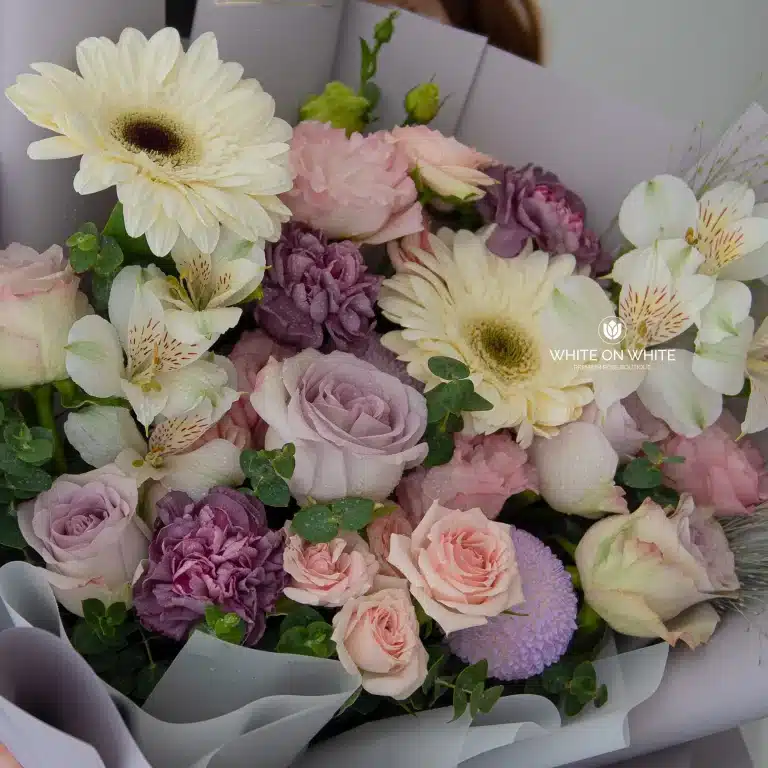The Art of Personalization: Transforming Your Home with Custom Doors
The entrance to a home serves as much more than a physical barrier. It reflects the inhabitants’ taste, style, and attitude towards design. As the nexus of external and internal space, a door is the first impression and the final farewell of a household, bearing the responsibility of both aesthetics and functionality. And when doors are custom-designed, they tell a nuanced story, embodying the owners’ persona while meeting their practical needs.
This article explores the multifaceted aspects of custom door designs, from their historical evolution to the role they play in modern home aesthetics. The journey begins here for those looking to explore contemporary custom doors for sale.
Key Takeaways
- Understanding custom door designs’ historical and personal significance enhances home aesthetics.
- Selecting the suitable materials and craftspeople can profoundly impact the door’s quality and appearance.
- Technological advancements are shaping the future of door design by integrating smart home connectivity and enhancing security features.
Understanding the Appeal of Customization
Customization indoor design celebrates uniqueness—an opportunity for homeowners to present their signature style to the world. A custom door does more than open and close; it’s an invitation, a piece of history, and an art installation all in one. It sets the tone for the rest of the home’s design and is what guests remember most. With a range of custom doors for sale, choices span from classical to contemporary, rustic to minimalist, catering to every imaginable design palate.
The advancement in door customization has been dynamic. Throughout history, doors have symbolized protection, inclusion, and style. Over time, the significance attached to doors has evolved, but their fundamental purpose remains unchanged—to safeguard and impress. Today, custom doors interweave the homeowner’s identity with practical necessities, boasting intelligent security features and energy efficiencies. They are no longer mere entry and exit points but are central to the home’s character and owner’s peace of mind.
Materials and Craftsmanship in Door Design
Every material brings its inherent qualities to a custom door. Woods like oak, mahogany, and cherry offer a warm, inviting feel, each with varying grains and hues. Metals like stainless steel and wrought iron impart contemporary style and structural weight. Fiberglass and glass materials add contemporary gloss and the flow of natural light while providing surprising durability and energy efficiency.
True craftsmanship elevates the chosen material into a functional piece of fine art. Artists combine hand-wrought details with precision machinery to create custom doors that are expressive and resilient. The highest-quality craftsmanship involves not only technical skill but also a willingness to experiment and innovate, integrating time-honored techniques with contemporary design trends, resulting in doors that are timeless yet modern.
The importance of selecting quality materials and craftsmanship cannot be overstated. When these elements are masterfully combined, the result is a door that not only withstands the test of time but also exudes elegance and reveals the homeowner’s attention to detail and pursuit of excellence.
The Functional Aspects of Door Customization
Custom doors merge form with function, evolving to meet modern security expectations. Today’s door designs may incorporate smart locks controllable via smartphone, biometric entry systems for personalized access, and reinforced cores to deter break-ins.
Even as we invite beauty into our homes, security remains paramount. Innovations in door technology provide layered security without sacrificing design integrity. Energy efficiency is another aspect where the functional meets the ecological.
Modern custom doors are built with energy conservation in mind, employing weather-resistant seals and multi-paned glass that keeps homes insulated, thus reflecting a growing consciousness toward reducing carbon footprints.
Functionality also considers the long-term durability of materials and the adaptation of designs to withstand various climates. Whether facing intense sunlight, high humidity, or freezing temperatures, custom doors are engineered to perform dutifully across the seasons, ensuring the homeowner’s investment is protected and pollution is minimized.
Cultural Significance of Door Designs
Door designs often encompass a rich tapestry of cultural significance. The patterns carved into the wood, the motifs adorning the panels, and even the colors that brighten the surface can narrate the homeowner’s cultural background, beliefs, or interests.
They’re not merely designs; they are stories told in silence, welcoming friends and warding off misfortune. Across the world, doors have served as potent symbols—thresholds that mark transitions and demarcate private from public, sacred from the mundane.
In feng shui, the door’s color, material, and placement are believed to influence the home’s energy flow. A custom door can thus be a fusion of personal tastes and age-old traditions, skillfully interweaving current trends with deep-rooted cultural narratives.
The aesthetic allure of doors has been treasured in every culture, and custom designs continue to honor this heritage today. For many, a door can act as a canvas that pays homage to their ethnic roots or personal history, embedding a sense of identity into the very entryway of their abode.
The Process of Designing a Custom Door
Designing a custom door is an intimate excursion into personalizing one’s space. It begins with consultations, during which aspirations and inspirations are translated into sketches.
These sketches lay the foundational blueprint from which the door’s journey, from concept to hardware selection to final installation, takes shape. Selecting adept artisans is imperative, as their expertise in marrying artistic vision with functional demands brings the door to life.
These professionals must bring technical prowess, a good eye for detail, and an understanding of personal client needs. Their dedication to the craft translates to custom doors that are aesthetically pleasing, structurally sound, and reliable.
Clients may remain involved as the custom door undergoes fabrication, giving feedback and deciding on the finer details. By working together, the homeowner’s vision is authentically represented, and the finished product is a remarkable representation of their taste and way of life.
Current Trends in Custom Door Designs
Custom door design continuously evolves, with new trends emerging to reflect lifestyle and design preferences changes. For example, blending indoor and outdoor spaces has led to the popularization of glass-paneled doors that offer an uninterrupted view, enhancing the integration of natural surroundings with interior aesthetics.
The impact of technology on custom doors extends beyond security integration. Door designs increasingly incorporate elements such as LED lighting for an added dramatic effect or intelligent sensors for environmental monitoring like temperature and air quality, thus dovetailing with the rise of connected home ecosystems.
The push towards sustainability has also ushered in using reclaimed wood and eco-friendly varnishes, pointing to a future where door designs align with a more conscientious approach to resources and the environment. As consumers become more environmentally aware, the door industry responds with innovative, green alternatives catering to aesthetic appeal and eco-friendly living.
Incorporating Personal Touches
Adding a bespoke element to a custom door is like signing your work of art. These personal touches, whether in the form of a particular engraving or a uniquely colored stain, make the space truly one’s own. One cannot stress the psychological effects of being involved in the design process and making a physical mark on the doorway to your world—it makes the house feel more uniquely yours.
The integration of such detailing enhances visual appeal and creates emotional attachment. A custom door can commemorate a significant personal event or celebrate a hobby or passion. It becomes a manifestation of the owner’s creativity and storytelling through design.
Incorporating unique design elements into custom doors enables homeowners to discover their spot. It elevates the door from a mere architectural element to one of sentimental significance, cherished through generations.
Maintenance and Upkeep of Custom Doors
The magnificence of a custom door is sustained not just by its initial craftsmanship but also through diligent maintenance. Timely attention to wear and tear can vastly extend the door’s lifespan, ensuring it remains as charismatic as it was on day one. It involves routine cleaning to prevent dust and moisture accumulation, which can lead to warping or discoloration.
Preventative maintenance counters the effects of harsh weather while monitoring the hardware to maintain operational integrity. Different materials demand specific care—wooden doors might need re-staining to preserve their luster, while metal doors may require rust protection.
Being proactive in the upkeep of custom doors means their beauty and function are immortalized, becoming as much a part of the home’s legacy as its foundations. Treat your door not just as an entryway but as an investment in the home’s character—an ornament to be maintained with pride.
Choosing the Right Custom Door for Your Home
Deciding on the right custom door can be an exhilarating yet daunting task. The door sets expectations for the rest of the house, making the choice significant. While aesthetic preferences are personal, the door must harmonize with the home’s architecture.
A minimalist door can enhance a modern home’s sleek lines, while a more ornate option would suit a Victorian-style residence. Budgeting also plays a critical role in selection. Thankfully, the doors market offers a breadth of options accommodating a myriad of financial considerations. This democratization means that custom doesn’t always mean costly and that elegance and personalization can be achieved within budgetary constraints.
The essential lies in discerning the delicate balance between what catches the eye, what speaks to the heart, and what satisfies the wallet. Aesthetic harmony, financial feasibility, and material durability are the triptych upon which sound custom door selection is predicated. Navigating this decision with patience and care will reward homeowners with an entryway that complements their style and secures their sanctuary.
The Future of Custom Doors
The future of custom doors is as exciting as it is varied, with potential developments touching upon sustainable practices, innovative design, and technological enhancements. We can anticipate doors that reflect aesthetic trends and adapt to changing environmental and security concerns. Sustainability is becoming a primary driver for innovation, with recycled materials and ecologically sound manufacturing processes gaining traction.
Conclusion
As consumers emphasize conservation and sustainability, door designers and makers are rising to meet these challenges with responsible yet stylish solutions. Innovations in technology, including biometrics and integrated smart home systems, are pushing the frontier of door security and convenience. These innovations promise to make custom doors not only a hallmark of design excellence but also bastions of high-tech security.





